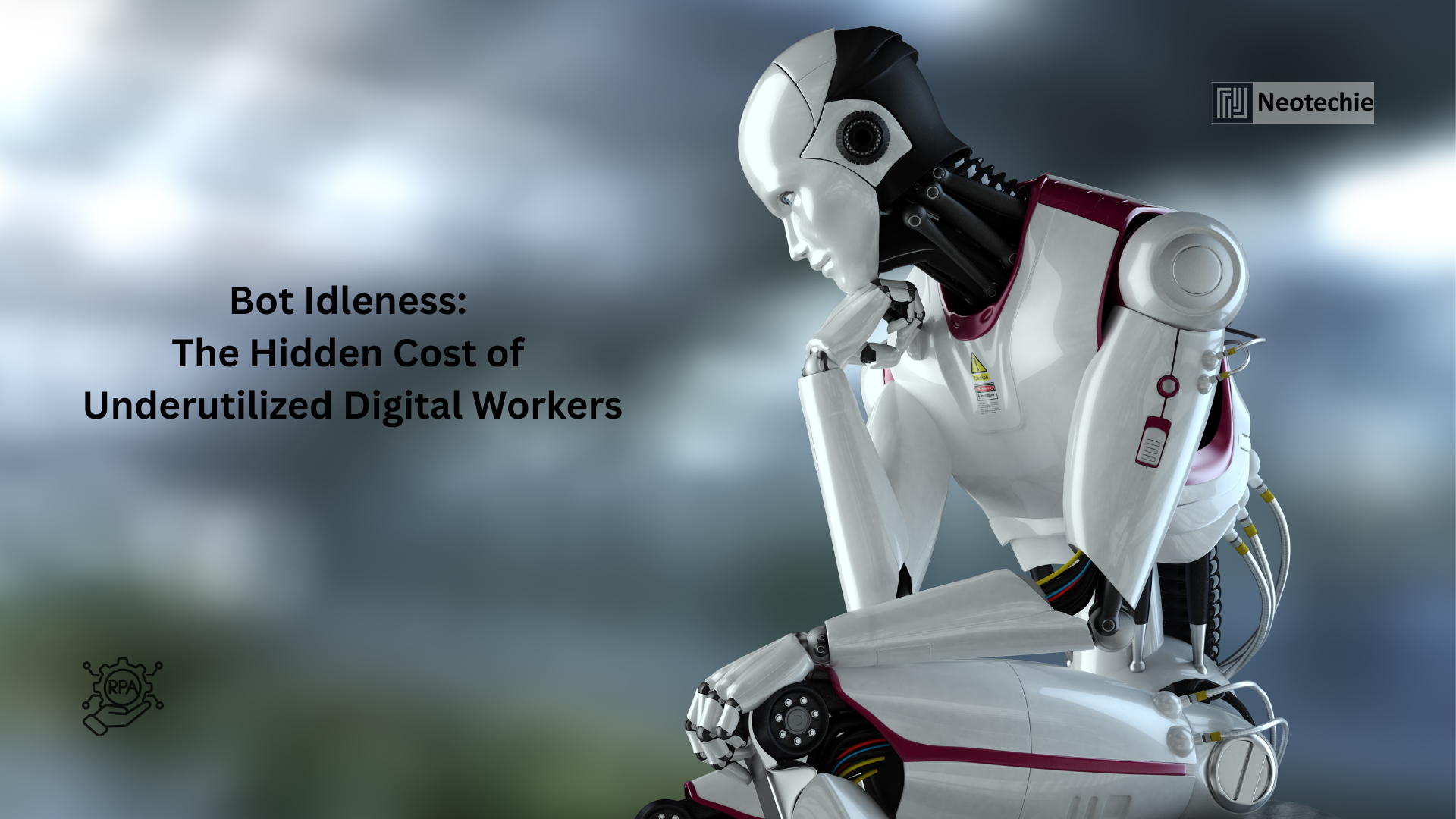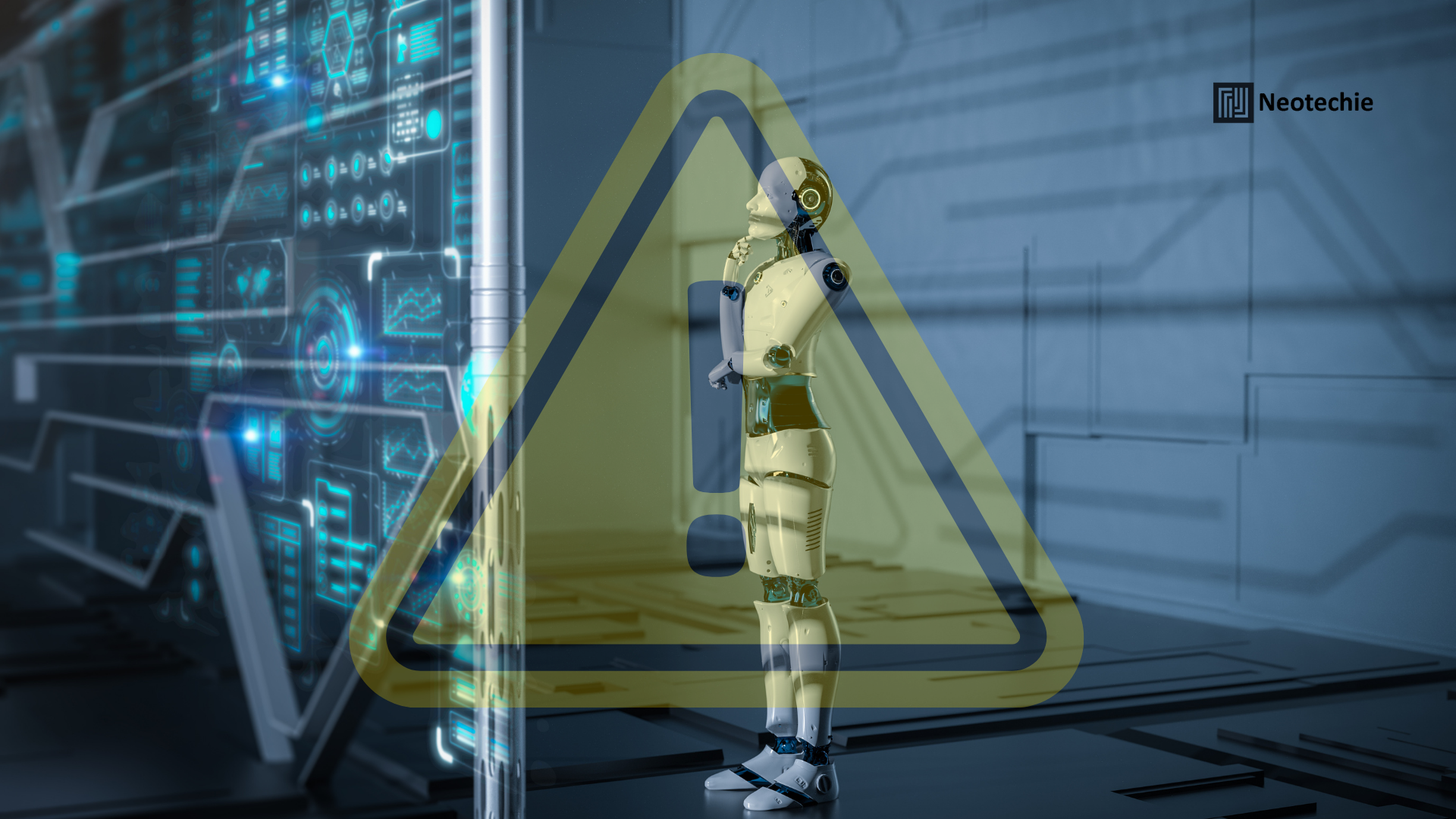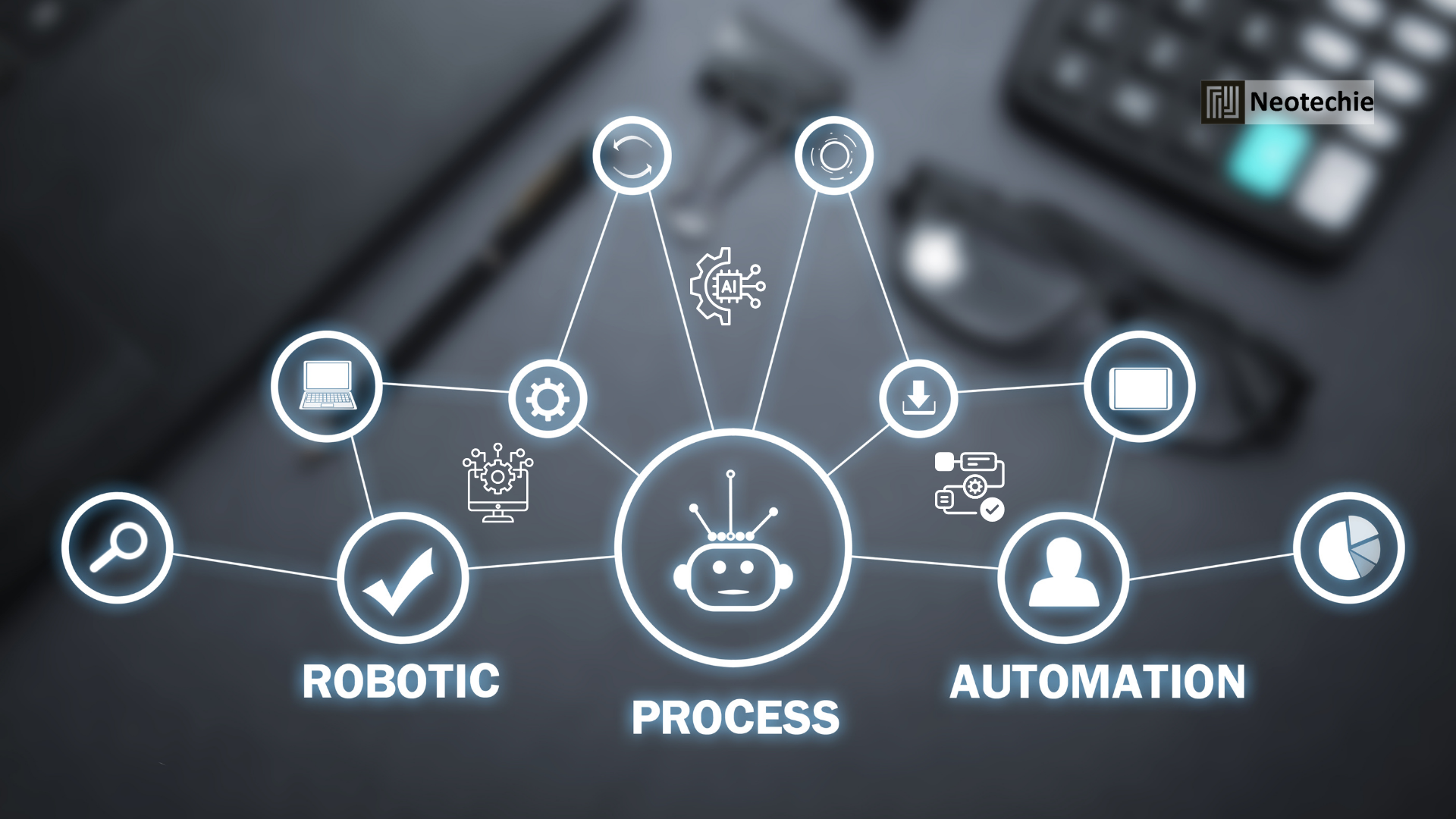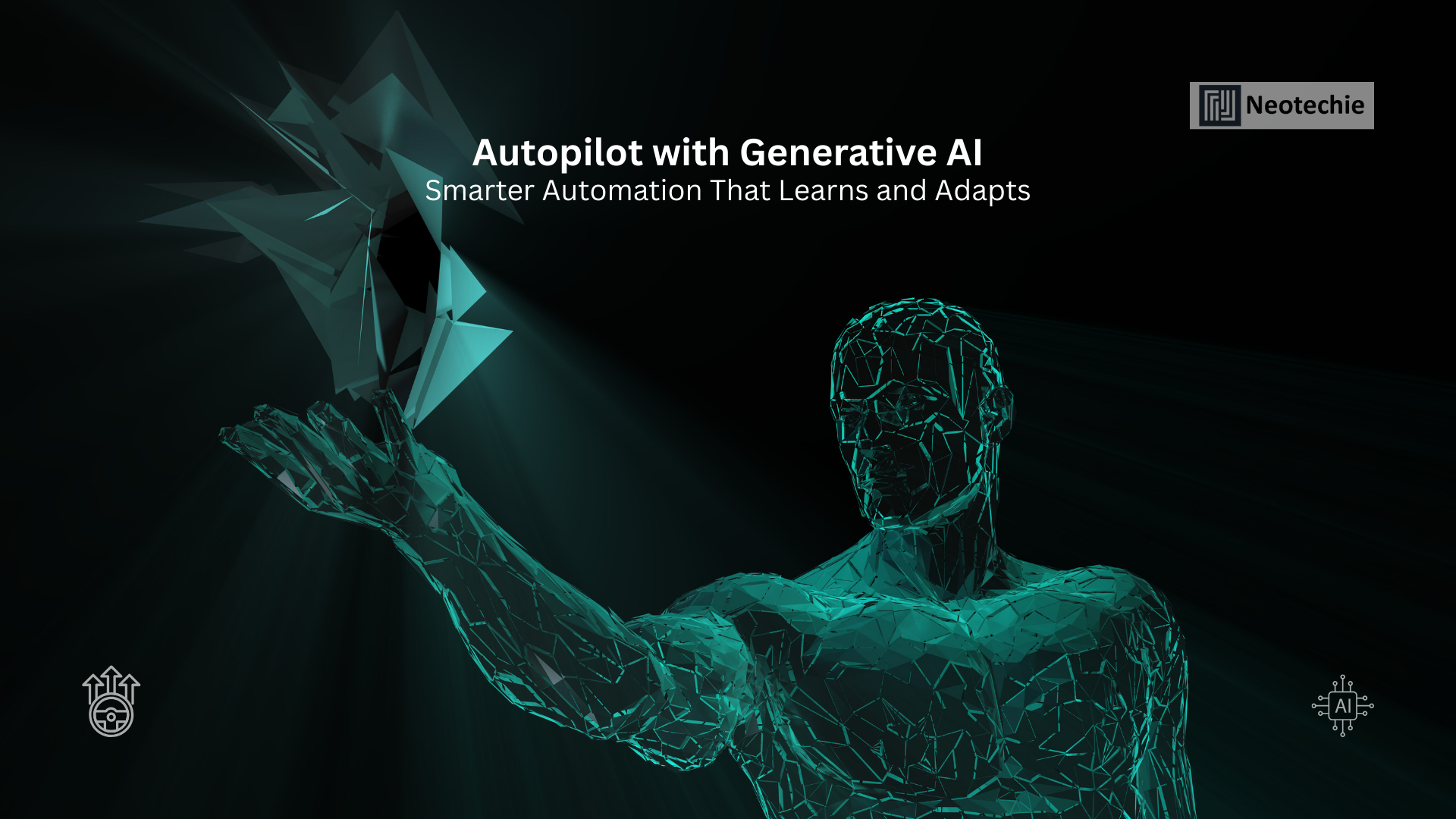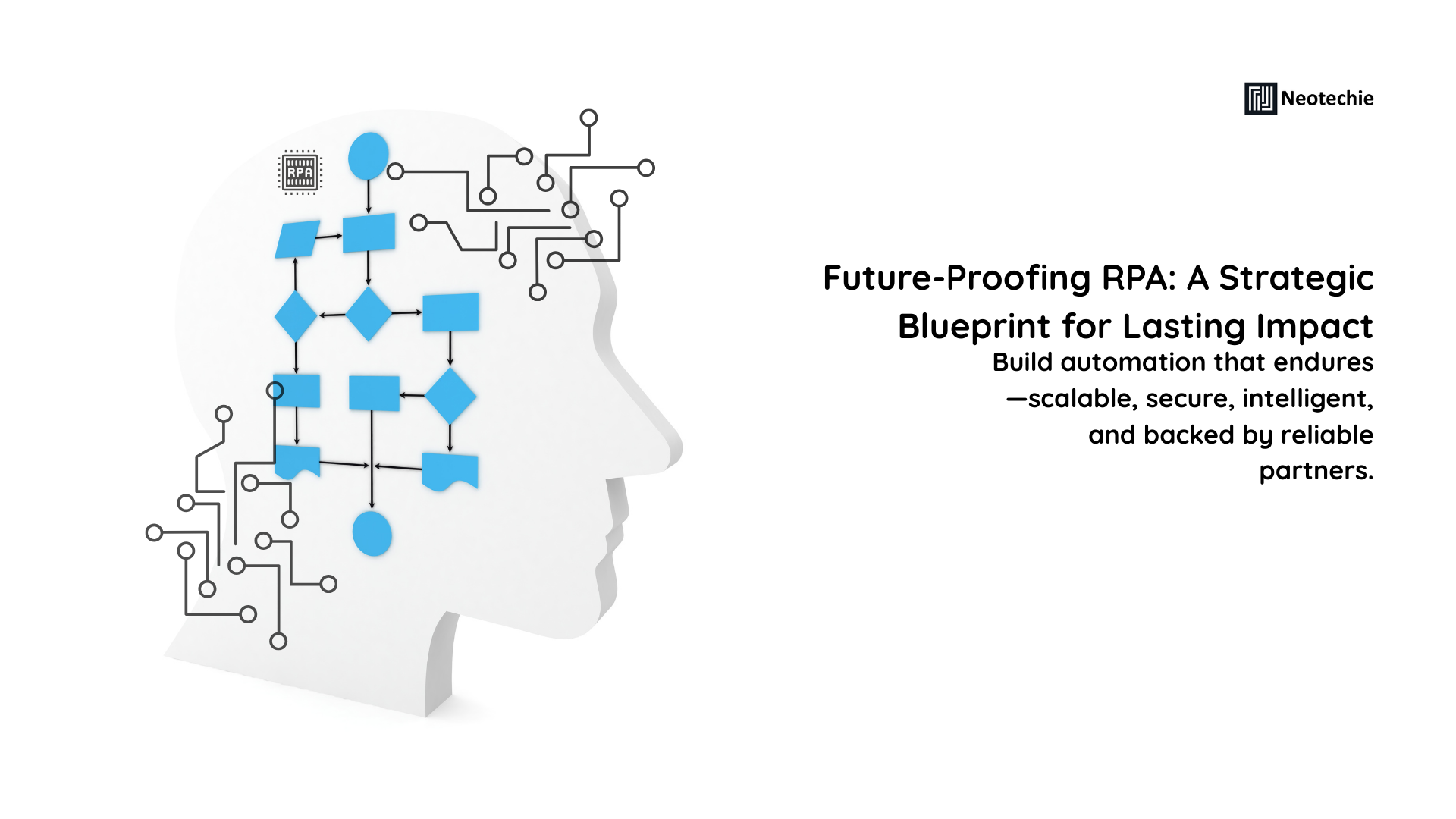The Hidden Waste in Digital Workforces
Many enterprises invest heavily in Robotic Process Automation (RPA) to streamline operations, improve efficiency, and reduce manual workloads. Yet, a surprising and often overlooked challenge is bot idleness — when deployed digital workers remain underutilized, idle, or performing redundant tasks. Just like human employees, bots require maintenance, consume licenses, and occupy system resources. However, their inactivity often goes unnoticed, resulting in hidden costs, inefficiencies, and delayed return on investment (ROI).
Understanding and addressing bot idleness is essential to ensure enterprises derive maximum value from their RPA initiatives. Idle bots not only inflate costs but also obscure opportunities for deeper process optimization and digital transformation.
What Causes Bot Idleness?
- Underutilized Bots
Bots are often deployed for processes that occur infrequently, such as monthly payroll runs, annual reporting, or rare compliance checks. While these bots execute critical tasks, their limited usage leaves them idle for significant portions of the month. This results in wasted RPA licenses and infrastructure resources. For example, a financial services company may purchase 50 bots, but if half of them process quarterly compliance forms, most of these digital workers remain dormant for weeks at a time, inflating cost without delivering continuous value. By analyzing bot schedules and task frequency, organizations can identify underutilization patterns and reassign bots dynamically to optimize productivity. - Redundant Automation
In decentralized automation environments, multiple bots may perform overlapping tasks across departments due to siloed automation initiatives. For instance, both the finance and procurement teams may have bots reconciling vendor invoices independently. This redundancy consumes extra licenses, increases maintenance overhead, and creates a complex automation landscape that is difficult to manage. Consolidating overlapping bots and centralizing governance allows enterprises to streamline operations, reduce duplication, and maximize the utility of each digital worker. - Process Bottlenecks
Bot idleness frequently occurs because upstream processes are delayed or inconsistent. If a bot responsible for validating invoices waits for manual purchase order approvals, it remains idle until input is available. These process bottlenecks hinder the full utilization of RPA, limit efficiency gains, and extend cycle times. By mapping end-to-end workflows and identifying dependencies, organizations can optimize upstream processes and ensure bots operate continuously, delivering consistent value. - Licensing Misalignment
Enterprises often purchase RPA licenses based on projected peak usage or process coverage but fail to monitor actual bot activity. Idle bots continue occupying licensed slots, leading to unnecessary software expenditure. Without real-time insights into utilization, organizations cannot determine whether their digital workforce is aligned with current operational needs. Implementing usage tracking and analytics helps enterprises optimize license allocation, reduce costs, and scale automation efficiently.
Why Bot Idleness Matters
- Financial Waste: Idle bots contribute to unnecessary RPA license expenses and operational overheads. Organizations may end up paying for hundreds of hours of unproductive automation, directly impacting the ROI of their RPA investments.
- Missed ROI and Strategic Opportunity: The true value of RPA lies in its ability to accelerate processes, reduce errors, and free human workers for strategic tasks. Idle bots mean that businesses are not fully leveraging the potential of their digital workforce, resulting in slower digital transformation.
- Operational Inefficiency: Underutilized bots create gaps in process optimization, leaving human employees to continue performing repetitive tasks unnecessarily. This can lead to decreased productivity, slower turnaround times, and increased error rates.
- Strategic Blind Spots: Lack of visibility into bot utilization prevents leadership from understanding how well automation supports organizational goals. Without these insights, enterprises miss opportunities to redeploy bots to critical processes or scale automation across departments effectively.
- Talent Misalignment: When digital workers are underutilized, human teams may still spend time on routine work that could be automated. This misalignment prevents employees from focusing on value-added tasks, affecting engagement and innovation.
How to Optimize Digital Workforce Utilization
- Centralized Monitoring and Analytics
Implementing a centralized monitoring system provides real-time dashboards for tracking bot activity, idle time, task completion rates, and process bottlenecks. By visualizing utilization patterns, managers can identify which bots are underperforming or idle. For instance, a retail enterprise discovered that 30% of their bots were idle due to seasonal process fluctuations. By reallocating bots to high-volume tasks such as order processing during peak seasons, they increased operational throughput by 25%. Analytics-driven monitoring ensures that every bot contributes measurable value. - Process Prioritization and Scheduling
Aligning bots with high-frequency, high-value processes ensures consistent utilization. Low-frequency tasks can be scheduled strategically to avoid extended idle periods. For example, bots used for monthly reconciliation can also be repurposed to support daily reporting, document verification, or data migration tasks in off-peak hours. This dynamic scheduling increases productivity and ensures bots are never idle when human teams require support. - Bot Consolidation
Enterprises should identify overlapping or redundant bots and merge their workflows. For instance, multiple departments may maintain separate bots for similar invoice validation tasks. Consolidating these bots reduces license costs, simplifies maintenance, and improves operational consistency. Additionally, a single, well-optimized bot can handle more complex tasks efficiently, enhancing automation ROI. - Dynamic Workload Assignment
Intelligent RPA platforms enable dynamic allocation of bots based on workload demand, peak periods, or unexpected business surges. Bots responsible for invoice processing can be automatically reassigned to payroll, reporting, or data migration tasks during idle times. This ensures that digital workers operate at full capacity, enhancing productivity and responsiveness. In high-transaction environments like banking or logistics, dynamic workload assignment prevents bottlenecks and accelerates operational cycles. - Regular Audits and Continuous Improvement
Periodic review of bot activity, performance, and process alignment ensures that the digital workforce evolves with business needs. Obsolete bots should be retired, workflows optimized, and new processes automated based on emerging priorities. Continuous improvement not only maximizes utilization but also drives long-term operational agility, cost efficiency, and scalability.
Business Transformation Through Optimized Bot Utilization
- Maximized ROI: Ensuring every bot is utilized effectively reduces wasted license costs and maintenance overhead, increasing the financial benefits of RPA.
- Enhanced Efficiency: Optimized bots execute critical processes faster and more accurately, freeing human resources for high-value tasks.
- Operational Agility: Dynamic workload allocation allows businesses to respond quickly to unexpected demand, seasonal peaks, or urgent business needs.
- Data-Driven Insights: Continuous monitoring generates actionable analytics, enabling leadership to make strategic decisions about process improvement and automation scaling.
- Scalable Automation: High bot utilization ensures that enterprises can expand RPA initiatives confidently, without unnecessary license increases or process inefficiencies.
How Neotechie Can Help
At Neotechie, we help organizations unlock the full potential of their digital workforce:
- Implement real-time bot monitoring dashboards for visibility into idle time, task performance, and process efficiency.
- Analyze and consolidate redundant bots to reduce unnecessary costs and simplify the automation landscape.
- Design dynamic workload allocation strategies to maximize bot utilization across all business processes.
- Conduct regular audits and continuous improvement cycles to align automation with evolving business priorities.
- Enable enterprises to scale RPA efficiently, ensuring every digital worker contributes to operational excellence and business transformation.
Idle bots represent hidden costs and missed opportunities. By monitoring, optimizing, and dynamically allocating digital workers, Neotechie ensures your RPA investment delivers maximum value, operational efficiency, and sustainable business transformation. ★ˎˊ˗

